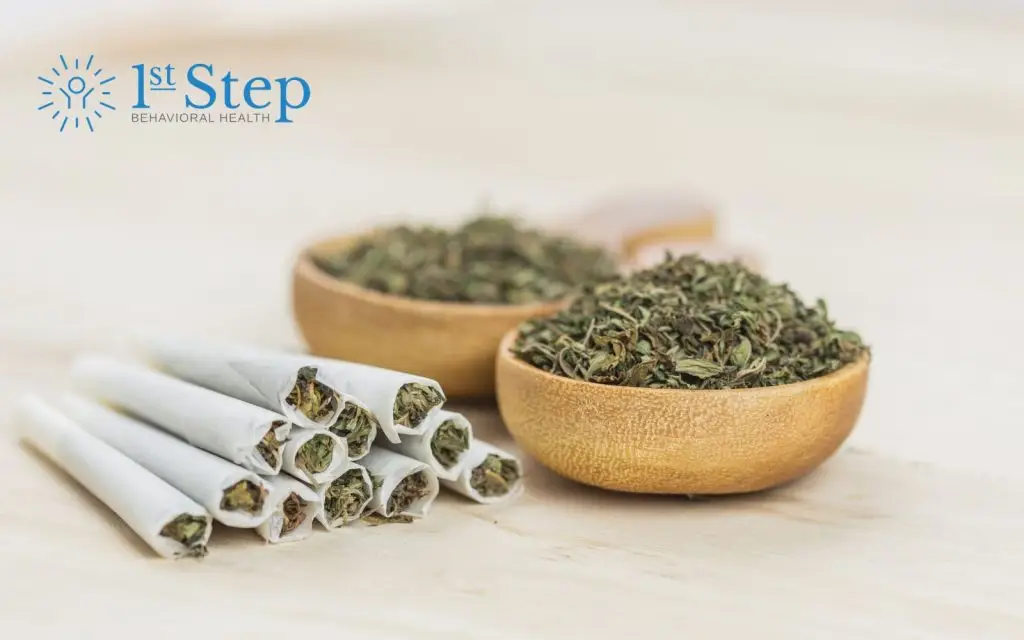People abuse drugs and other addictive substances for many reasons. People may experiment with certain drugs, including hallucinogens, for their pleasurable effects.
Salvia is a naturally occurring hallucinogenic substance. People may experience hallucinations and other effects while using salvia. While many people may not know about the risks and dangers of salvia, it is crucial to recognize the harm this drug can cause.
This article will explore salvia abuse. You will learn:
- What salvia is
- The effects and risks of using salvia
- How to recognize substance abuse
- Where to find treatment and support in addiction recovery
If you or someone you love struggles with salvia abuse or other forms of substance use, you are not alone. Effective, holistic treatment is available at First Step Behavioral Health.
Contact our intake specialists to explore our rehab programs or to schedule an intake evaluation.
Salvia: An Overview
Salvia is the common term for Salvia divinorum. It is an herb in the mint family that is common in South America, Central America, and Southern Mexico.[1] Mazatec Indians and others in these regions have been using salvia for centuries as part of traditional ceremonies.
Common slang terms for salvia include:[2]
- Magic mint
- Diviner’s sage
- Sally-D
- Maria Pastora
Salvia contains a hallucinogenic compound called salvinorin A. Salvinorin A is one of the most potent natural psychoactive substances.
Salvia possession and use are legal in some states, and it is not considered a controlled substance. However, it is a potent drug that can produce significant and sometimes dangerous effects.
If you are curious about salvia or are considering using it, you must understand the side effects and risks of this drug so you can make the best choice for you.
Understanding the Side Effects and Risks of Salvia
People ingest salvia by smoking an extract of this herb using a pipe or water bong. They may also chew fresh salvia leaves or consume the extract in a drink or vaporizer pen. Smoking or vaporizing salvia typically produces stronger effects. Smoking the dried leaves typically does not produce side effects.
There is little research into the safety of ingesting salvia. It is impossible to determine the safety of using salvia. Small doses of salvia can produce significant hallucinogenic effects.[3]
Some of the potential side effects of salvia include:
- Hallucinations (seeing or hearing things that are not there)
- Visual disturbances
- Dizziness
- Irregular heart rate
- Nausea
- Poor coordination
- Loss of motor control
Researchers believe that the active ingredient salvinorin A (the psychoactive compound in salvia) affects your brain in different ways. However, the way it works is unclear. Some researchers believe salvinorin A binds to nerve cells throughout the body, producing hallucinogenic effects.[4]
Some of the ways salvia can affect your brain include:
- Causing feelings of intense anxiety from a “bad trip”
- A distorted sense of reality
- Altered perceptions of your environment
- Feeling detached from reality
- Experiencing an “out of body” sensation
- Seeing or hearing things that are not there, including odd shapes, brighter colors, or lights
- Slurring speech
The effects of salvia may begin within just 5 to 10 minutes of ingesting it. People typically experience effects, including hallucinations, for a short time. However, some people experience salvia “highs” that last for several hours.
What are the Long-Term Risks of Salvia Use?
There is currently not enough research into the long-term effects of salvia on your physical or mental health. However, people who study substance abuse and addiction believe there could be short and long-term risks associated with ingesting salvia’s active ingredient and other psychoactive drugs.
Here is an overview of the potential risks of using salvia.
Anxiety
Some salvia users may experience fear or anxiety about having a “bad trip” while using the drug. A bad trip may include disturbing sensations, thoughts, or hallucinations.
People with existing anxiety may be more prone to anxiety, paranoia, or panic attacks while using salvia. However, anyone can experience worries or anxiety while using this potent substance.
Cognitive problems
A study on the effects of salvia on rats from 2011 suggests that salvia use may cause cognitive problems, including learning and memory deficits.[5]
Psychological dependence
Addiction experts do not classify salvia as an addictive substance. However, people who use this potent herb frequently may develop a psychological dependence on it.
Physical side effects
Ingesting salvia can cause significant physical side effects, including changes in heart rhythm, nausea, and hallucinations. Combining salvia and other drugs or alcohol can increase the risk of these unwanted side effects.
While many people do not consider salvia to be dangerous, using it can cause unwanted complications and risks. If you use salvia and want to stop, the support of a comprehensive treatment program can help.
Find Treatment Now
If you or someone in your life struggles with salvia abuse or another type of substance use disorder (SUD), effective treatment is available at First Step Behavioral Health.
Our holistic treatment programs include therapies, medical treatment, support, and mental health care to help you put substance abuse in your past. Take the first step of your recovery journey by contacting us today.
References:
- Science Direct: Salvia Divinorum
- United States Drug Enforcement Administration: Salvia Divinorum
- National Institute of Health: Salvia divinorum: from recreational hallucinogenic use to analgesic and anti-inflammatory action
- Johns Hopkins Medicine: Research Story Tip: A First Look at How the Drug Salvinorin A Works in the Brain
- National Institute of Health: Learning and memory impairment induced by salvinorin A, the principal ingredient of Salvia divinorum, in wistar rats
Jump to a Section
Call (855) 425-4846
